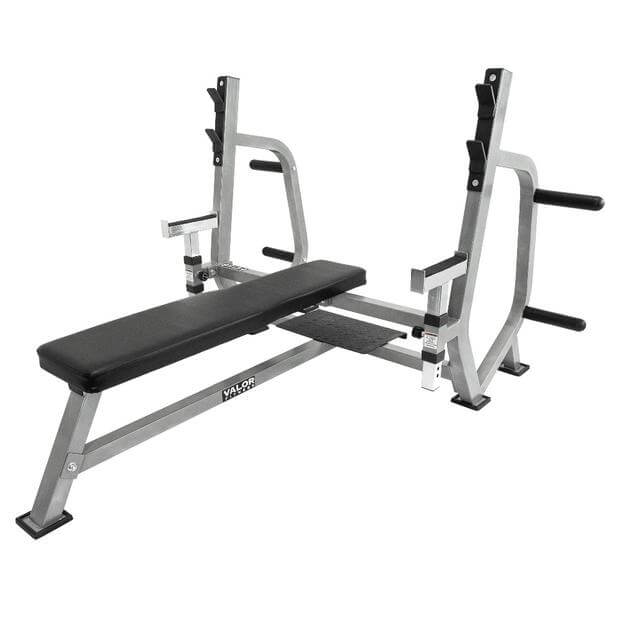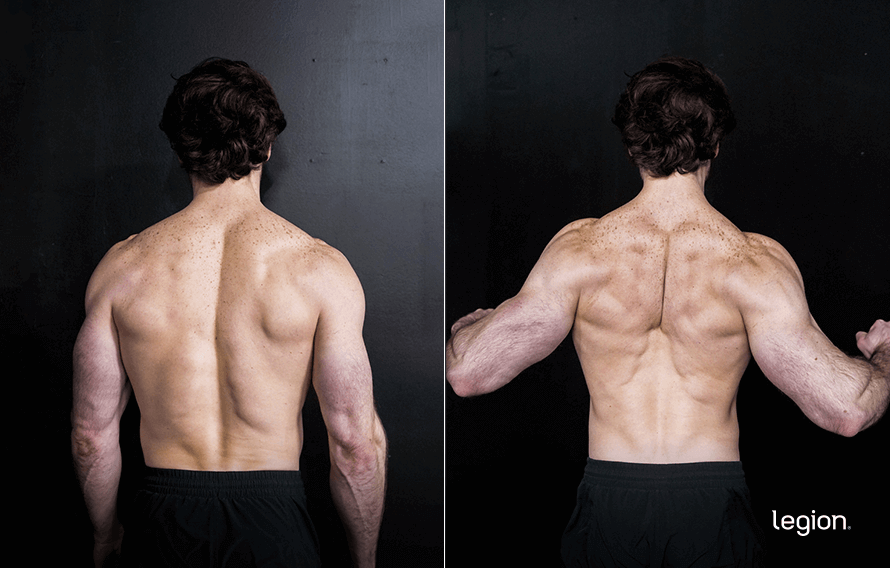The story of the bench press starts in 1899 with a strongman and wrestler named George Hackenschmidt.
Also known as “The Russian Lion,” Hackenschmidt was known for inventing new exercises to help him prepare for wrestling matches.
One such exercise involved getting into a position known as the “wrestler’s bridge,” then gripping a barbell and pressing it over his chest.
He modified the exercise slightly so that he was lying on his back instead of his neck (ouch), and then proceeded to press 362 pounds—a record that stood for 18 years.
Sooner or later someone decided to lay on a bench with the barbell suspended on pins overhead, and viola, the modern bench press was born.
What most people refer to as the bench press is technically the flat barbell bench press, as there are also several variations worth learning that involve dumbbells, incline benches, and machines.
Most people also think the bench press only trains your chest. While it is an excellent chest exercise, the truth is that when performed properly, it trains almost every muscle in your body except your legs, calves, and glutes.
Table of Contents
Bench Press Benefits
The bench press is one of the single best exercises for building almost every major muscle in your upper body, if you do it correctly.
Specifically, the bench press develops your . . .
- Pectoralis major and minor
- Triceps
- Deltoids
- Latissimus dorsi
- Trapezius
- Forearms
The stronger you get, the more you’ll need to rely on other muscle groups to help stabilize your body, and the more of a full-body exercise it becomes.
How to Bench Press with Proper Form
To perform this exercise properly, you’ll need a dedicated bench press station (most do) or a padded bench and squat rack. Here’s what a bench press station looks like:

Step 1: Set Up
First, lie down on the bench and adjust your body so your eyes are under the bar.
Then, raise your chest up and tuck your shoulder blades down and squeeze them together. A good cue for this is to think of pulling your shoulder blades into your back pockets, like this:

Grab the bar with your hands slightly wider than shoulder-width apart, about 22 to 28 inches, depending on your build.
Plant your feet on the ground about shoulder-width apart, arch your back slightly, and unrack the bar by locking your elbows out to push the bar off the hooks..
While keeping your arms locked, move the bar horizontally until it’s directly over your shoulders.
Step 2: Descend
Keeping your elbows tucked and in place, lower the bar to the lower part of your chest, over your nipples. The bar should move in a straight line down, not toward your face or belly button.
Once the bar has touched your chest (touched, not bounced off of), you’re ready to ascend.
Step 3: Ascend
Keeping your shoulder blades down and pinched, your elbows tucked, your lower back slightly arched, your butt on the bench, and your feet on the floor, push against the bar to get it off your chest.
The bar should move up with a slightly diagonal path, moving toward your shoulders, ending where you began: with the bar directly over your shoulders, where it’s most naturally balanced.
Bench Press Tips
Tip 1: Keep your elbows at a 50-60 degree angle
You want your elbows to remain at a 50- to 60-degree angle relative to your torso throughout the entire movement. This protects your shoulders from injury and is a stable, strong position to press from.
Tip 2: Keep your feet planted firmly on the floor
An easy way to do this is to push your knees out to the sides and push your heels into the ground as you push the bar off your chest. A common mistake is to let your knees shoot inward or lift up your feet during your last few reps, which reduces tension in your upper body and makes it harder to finish your set.
Tip 3: Don’t Strain Your Wrists
Hold the bar low in your hands, closer to your wrists than your fingers, and squeeze it as hard as you can. Your wrists should be bent just enough to allow the bar to settle into the base of your palm, but not folded back at a 90-degree angle, like this:

Tip 4: Use a full grip (wrap your thumb around the bar)
Don’t use a “thumbless” or “suicide” grip (as it’s aptly called) where your thumbs lie next to your index fingers as opposed to wrapped around the bar. The reason for this is obvious: when you’re going heavy, it’s surprisingly easy for the barbell to slip out of your hands and crash down on your chest, or worse, your throat.
Tip 5: Arch your back properly
You don’t want your back flat on the bench and you don’t want it so arched that your butt is floating above it. Instead, you want to maintain the natural arch that occurs when you push your chest out and your feet apart.
Bench Press Variations
Variation 1: Close-Grip Barbell Bench Press
When you narrow your grip on the bar, you place more of the load on the triceps and slightly less on your chest.
The close-grip bench press is just a regular bench press performed with your hands a few inches inside shoulder-width apart, or about two to three inches closer than your normal grip. Other than the grip modification, you should perform the close-grip bench in exactly the same way as the bench press.
Variation 2: Dumbbell Bench Press
The dumbbell bench press is similar to the barbell bench press, except you press one dumbbell in each hand instead of a barbell.
The two main benefits of the dumbbell bench press are that it allows you to increase the range of motion beyond the standard barbell bench press and to use whatever wrist position feels more comfortable to you.
Variation 3: Incline Bench Press
The incline bench press works exactly the same way as the barbell bench press, except you lie on an incline bench instead of a flat bench.
When doing the incline bench press, the angle of incline in the bench should be 30 to 45 degrees. The basic setup and movement of the incline bench press is just as you learned for the regular bench press, with a small exception: the bar should pass by the chin and touch just below the collarbones to allow for a vertical bar path.
Variation 4: Reverse-Grip Barbell Bench Press
The reverse-grip bench press is similar to the close-grip and incline bench press, in that it emphasizes the upper portion of your chest muscle.
To do the reverse-grip bench press, flip your grip around on the bar (so your palms face you). Grip the bar so that it crosses your palm diagonally, from the base of your index finger to the opposite edge of your wrist.
Variation 5: Decline Bench Press
The decline barbell bench press is popular among some people but I’m not a fan. Thanks to its reduced range of motion, it’s just less effective than incline and flat pressing.
A common argument made for doing decline presses is working the lowest portion of the pectoralis major, but there isn’t much evidence that you need to specifically train the “lower” portion of the pecs (which are already trained during the flat barbell bench press).











